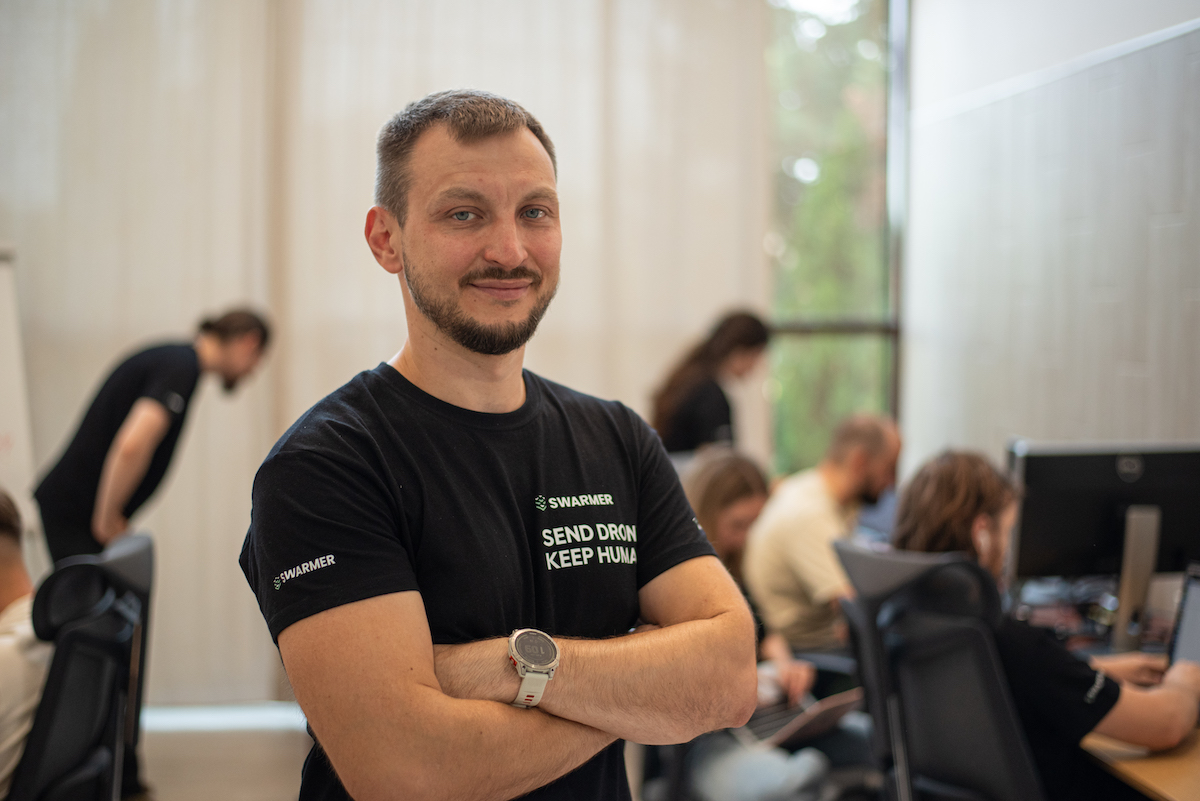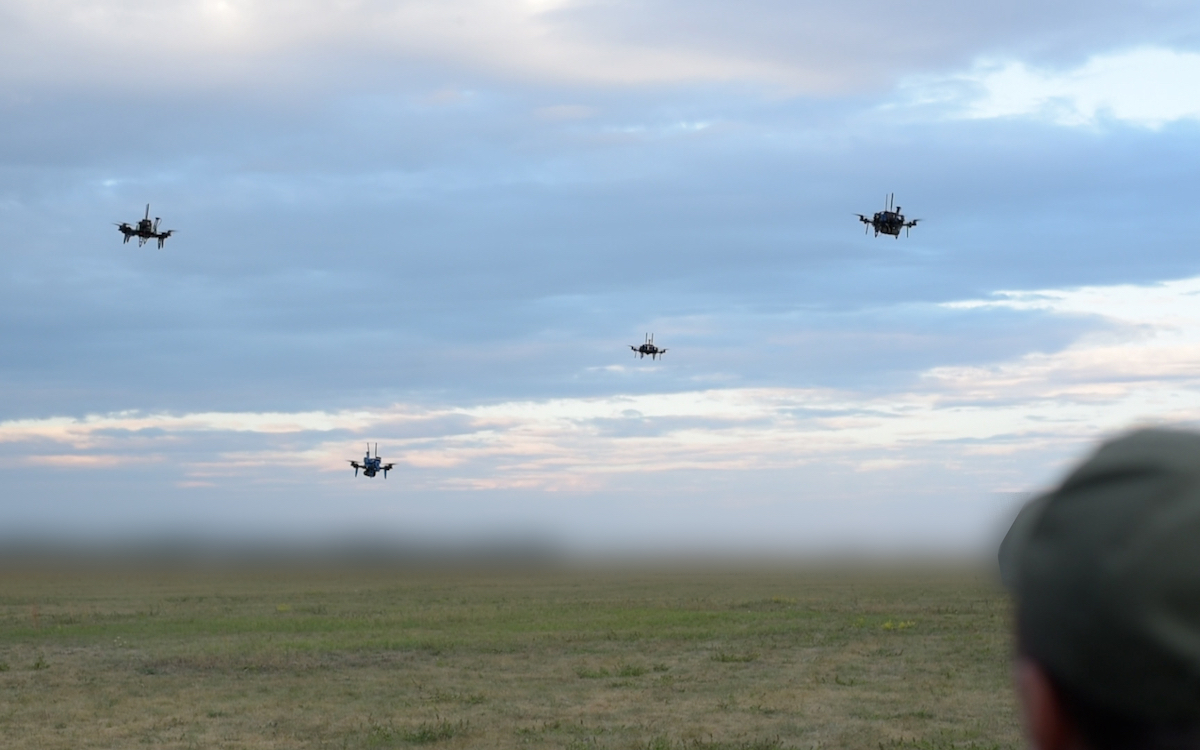Swarmer Raises $15 Million. We Spoke to the Company’s Co-Founder About It
Ukrainian startup Swarmer, which builds AI systems for managing drone swarms, has closed a $15 million round, the largest publicly announced raise in a Ukrainian defense-tech project so far.
Scroll.media spoke with the company’s co-founder and CEO, Serhii Kupriienko, about the new investment, plans for the money, and how Swarmer’s tech could be useful beyond the battlefield.

A new big round — congratulations. Interestingly, you also announced the last one on September 16, 2024 — exactly a year ago.
We joked about it internally. It wasn’t planned. Pure coincidence.
When did you start preparing the new deal? How long did it take?
The process started in spring 2025, although back then we hadn’t decided on the format. We could have done a quick bridge round and closed in May, or we could prepare for a full Series A.
Round A would be larger but also brings more obligations.
After weighing the options, we went for a full Series A. The active preparation phase was in summer 2025, so you could say we closed it in a few months.
Your lead investor is Broadband Capital Investments, a new name in Ukrainian defense tech. How did you get them involved — who approached whom?
I can’t disclose details at this stage. Maybe later.
Another regular investor is D3. Do you communicate with Eric Schmidt?
I can’t share details on that due to the topic’s sensitivity.
What will the funds be used for?
In short, we want to get our system into the hands of defenders faster and at scale. That means rapid integration and delivering devices to military users so they can operate them. Ukraine’s victory is our top priority.
A second track is expanding our international presence. We’ve been traveling a lot — Japan, the UK, defense-tech shows across Europe, and the US. I can’t go into specifics yet, but building a global footprint is important to us, and the new investment helps enable that.
How many drones can the system combine today?
That’s a very sensitive question — we can’t answer it without approval from the General Staff. I can only say it’s more than anyone might expect. Otherwise, refer to the Wall Street Journal piece.

Editor’s note: A recent WSJ article reports that Swarmer combines up to eight drones into a single swarm — not a test, but a real combat application used on the front line in operational conditions.
Let’s finish with the civilian side: Swarmer positions itself as a dual-use company. How’s that going?
We believe in victory, so defense is our main focus, but it’s not the only thing we work on.
The civilian side is already being tested in two areas:
- Disaster response — helping rescuers and firefighters during fires, natural disasters, and other emergencies where a fast, automated system that minimizes human exposure is useful.
- Public safety — operations at large events and concerts, for example.
We’re participating in tests both in Ukraine and internationally.
Interestingly, Ukraine sometimes offers unique, extreme test conditions: alarms that disrupt GPS, electronic-warfare activity, enemy drones in the area. That means even civilian tests can push our tech into scenarios other countries wouldn’t typically see, which makes the system more robust.
Swarmer Raises $15 Million. We Spoke to the Company’s Co-Founder About It
Ukrainian startup Swarmer, which builds AI systems for managing drone swarms, has closed a $15 million round, the largest publicly announced raise in a Ukrainian defense-tech project so far.
Scroll.media spoke with the company’s co-founder and CEO, Serhii Kupriienko, about the new investment, plans for the money, and how Swarmer’s tech could be useful beyond the battlefield.

A new big round — congratulations. Interestingly, you also announced the last one on September 16, 2024 — exactly a year ago.
We joked about it internally. It wasn’t planned. Pure coincidence.
When did you start preparing the new deal? How long did it take?
The process started in spring 2025, although back then we hadn’t decided on the format. We could have done a quick bridge round and closed in May, or we could prepare for a full Series A.
Round A would be larger but also brings more obligations.
After weighing the options, we went for a full Series A. The active preparation phase was in summer 2025, so you could say we closed it in a few months.
Your lead investor is Broadband Capital Investments, a new name in Ukrainian defense tech. How did you get them involved — who approached whom?
I can’t disclose details at this stage. Maybe later.
Another regular investor is D3. Do you communicate with Eric Schmidt?
I can’t share details on that due to the topic’s sensitivity.
What will the funds be used for?
In short, we want to get our system into the hands of defenders faster and at scale. That means rapid integration and delivering devices to military users so they can operate them. Ukraine’s victory is our top priority.
A second track is expanding our international presence. We’ve been traveling a lot — Japan, the UK, defense-tech shows across Europe, and the US. I can’t go into specifics yet, but building a global footprint is important to us, and the new investment helps enable that.
How many drones can the system combine today?
That’s a very sensitive question — we can’t answer it without approval from the General Staff. I can only say it’s more than anyone might expect. Otherwise, refer to the Wall Street Journal piece.

Editor’s note: A recent WSJ article reports that Swarmer combines up to eight drones into a single swarm — not a test, but a real combat application used on the front line in operational conditions.
Let’s finish with the civilian side: Swarmer positions itself as a dual-use company. How’s that going?
We believe in victory, so defense is our main focus, but it’s not the only thing we work on.
The civilian side is already being tested in two areas:
- Disaster response — helping rescuers and firefighters during fires, natural disasters, and other emergencies where a fast, automated system that minimizes human exposure is useful.
- Public safety — operations at large events and concerts, for example.
We’re participating in tests both in Ukraine and internationally.
Interestingly, Ukraine sometimes offers unique, extreme test conditions: alarms that disrupt GPS, electronic-warfare activity, enemy drones in the area. That means even civilian tests can push our tech into scenarios other countries wouldn’t typically see, which makes the system more robust.




